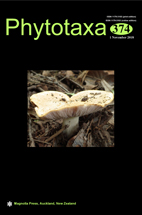Abstract
A new orchid species, Cymbidium daweishanense, from Yunnan Province, China, is described based on morphological and molecular analyses and illustrated. A detailed comparison between the newly discovered orchid and other members of Cymbidium was conducted. The new plant was similar to C. erythraeum, C. subgenus Cyperorchis, but differs in having smaller flowers, a lip free from even the basal margins of column and a glabrous column with many purple blotches. The phylogenetic analyses based on nuclear ribosomal ITS and plastid (matK, rbcL) sequence data support the status of C. daweishanense as a new species.

